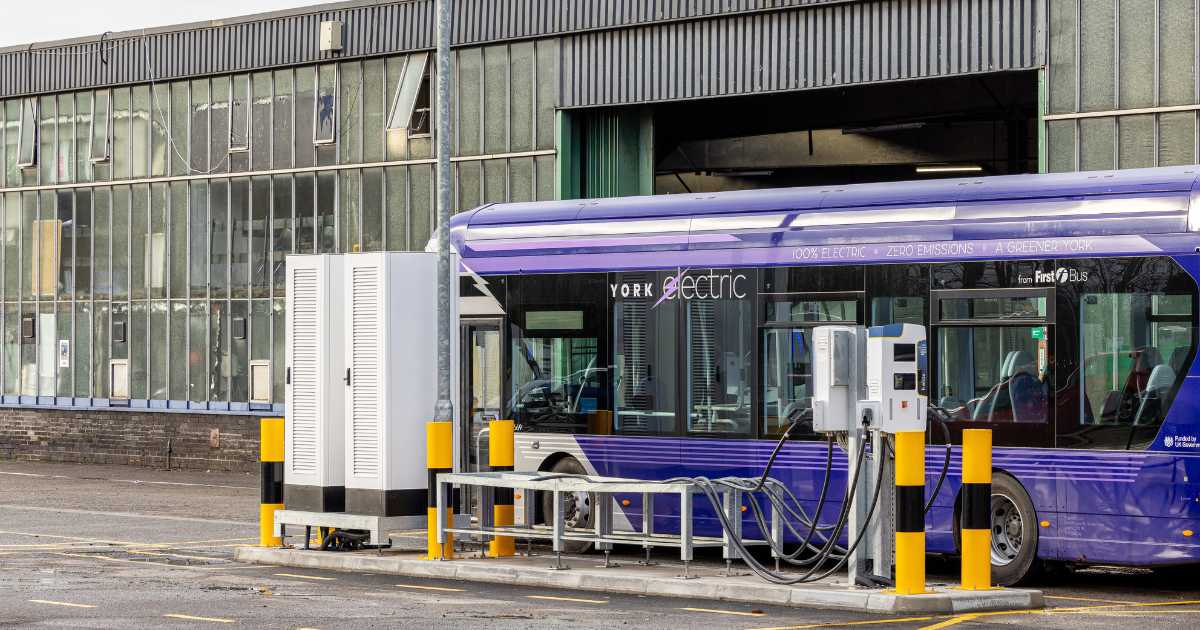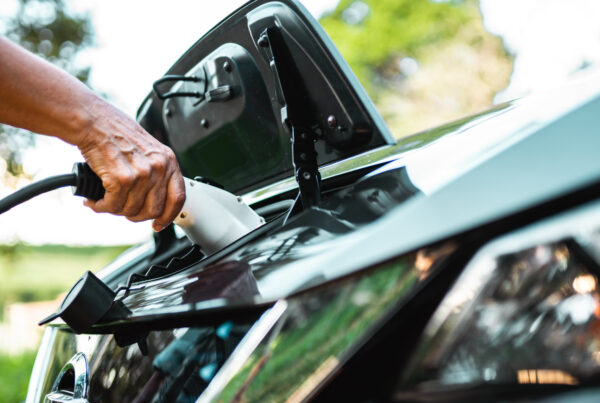Ready to transform your bus depot? As the UK transport industry strives towards net-zero ambitions, installing EV charging infrastructure at bus depots is becoming increasingly vital for public transport operators. The shift to electric not only significantly reduces emissions but is essential as the 2030 deadline to discontinue new petrol and diesel vehicles approaches.
At Envevo, we have years of experience in delivering comprehensive EV charging infrastructure for esteemed clients such as First Bus, Stagecoach, Go Ahead, and Lothian Buses. In this blog, we share valuable lessons learned from numerous depot electrification projects, highlighting six key considerations for UK bus operators planning to go electric.
1. Legal and Regulatory Requirements
Before embarking on the electrification journey, it’s crucial to navigate the legal and regulatory landscape. The UK government has established ambitious targets for reducing carbon emissions, supported by various regulations governing the implementation of electric vehicle infrastructure. For instance, the Alternative Fuels Infrastructure Regulation (AFIR) sets specific targets for zero-emission buses. Additionally, local authorities must secure planning permissions and conduct environmental assessments to ensure compliance. Operators must also adhere to regulatory and technical standards, ensure accessibility and reporting mechanisms are in place, and maintain accurate records of actions taken to address any issues. These steps are essential to achieving regulatory compliance and facilitating a smooth transition to electric bus depots.
2. Technical Infrastructure
Installing EV charging infrastructure at a bus depot involves significant technical upgrades to meet both current and future needs. Ensuring the grid capacity can support all facility requirements is essential, which may necessitate upgrades or a new electrical connection for reliable and efficient power distribution. Operators should carefully assess the types of charging infrastructure required for their fleet, such as depot charging, pantograph, or wireless systems, and understand the electrical requirements of each system.
Engaging experienced contractors, like Envevo, is crucial during this phase. Our team can conduct essential site surveys, review Distribution Network Operator (DNO) maps, and explore alternative power supply options to optimise project value. Additionally, considering the Total Cost of Ownership (TCO) is vital. TCO encompasses not only the initial investment but also ongoing operational costs, maintenance, and potential savings from energy efficiency and sustainability measures. This holistic approach ensures that the infrastructure is both cost-effective and sustainable in the long term.
3. Financial Implications
The cost of installing electric bus charging infrastructure at depots can be substantial. Initial expenses include purchasing electric buses, installing charging infrastructure, and potentially upgrading the grid connection. However, significant long-term savings can be achieved through reduced fuel costs and lower maintenance expenses when compared to internal combustion engine (ICE) vehicles. Studies indicate that operating an electric bus is 30-40% cheaper per mile than its diesel counterpart. Over a 15-year period, these operational savings can be considerable.
To further reduce costs, employing an Independent Connection Provider (ICP) for new electrical connections can be highly beneficial. ICPs can offer alternatives to the DNO, potentially lowering infrastructure costs and providing more flexible solutions. Additionally, working with experienced teams that can oversee each stage of the project using in-house resources is advisable. This approach helps save costs by minimising the need for multiple contractors and sub-contractors, which can often lead to costly gaps in communication and project consistency. By streamlining project management and maintaining clear communication, operators can ensure a more efficient and cost-effective implementation of EV charging infrastructure.
4. Government Grants and Subsidies
5. Environmental Impact
Electric buses offer numerous long-term benefits, including significant reductions in air pollution and greenhouse gas emissions, leading to improved public health and environmental sustainability. As previously mentioned, they can provide cost savings through lower fuel and maintenance expenses, and operate more quietly, reducing noise pollution. Additionally, electric buses have been shown to enhance the customer experience by offering a quieter, smoother ride, encouraging uptake of users.
For bus operators considering switching to electric buses, the UK government’s carbon calculator is a useful tool. It helps estimate the current carbon footprint of their diesel or petrol bus fleet and compare it to the potential emissions savings from switching to electric buses. By inputting data such as the number of buses, average mileage, and fuel consumption, operators can get a detailed breakdown of their current emissions and explore the environmental benefits of transitioning to electric buses. For more details, operators can visit the UK government’s carbon calculator page.
6. Operational Considerations
Operational changes are necessary to accommodate electric buses and their charging requirements. Depot layouts may need to be redesigned to facilitate efficient and safe charging and maintenance. Additionally, incorporating energy management systems (EMS) can significantly enhance operations by monitoring bus performance, predicting maintenance needs, and optimising energy usage. EMS can provide real-time data on battery health, energy consumption, and operational efficiency, allowing operators to make informed decisions and improve overall fleet management. Staff training is also crucial to ensure smooth operations and safety.
By carefully addressing these six key considerations when planning to implement EV charging infrastructure at your depot, you can ensure a smooth transition to an efficient and sustainable electric bus fleet. Choosing the right infrastructure partner is crucial in removing barriers and streamlining the process, guaranteeing minimal disruption to your operations and maximising the benefits of electrification. Our comprehensive turnkey service guides clients through every stage of their transition, from initial planning to energisation and ongoing maintenance of the infrastructure. Learn more about how we successfully supported First Bus at their Leeds depot here.




